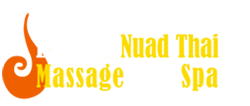Reflexology works on the principle that specific parts of the feet (along with the hands and ears) correspond and are connected to different organs and systems in the body. Applying controlled pressure to the various parts of the feet has a beneficial effect on the organs and systems they are connected to. Although reflexology is not a diagnostic science or a system of healing health disorders, it is used all over the world as a compliment to other forms of treatments, given for a wide range of health disorders, ranging from cardiovascular issues, cancer, kidney function, asthma, diabetes sinusitis and many more. It is also widely accepted as a good solution to reduce stress and to tone up the overall functioning of the body.
The History
It is thought that the use of reflexology dates back to pre-history. The first recorded use is found in an ancient Egyptian tomb dating back to about 2330 BCE. Old statues of the Buddha found in India and China appear to have reflexology symbols on the feet and a Chinese treatise on medicine from 1000 BCE has a chapter on “Examining the Foot.” A book on reflexology was published in Europe in the late 16th century and the science was introduced to America in1917 by Dr. William H. Fitzgerald. In the 1930s Eunice Ingram, a noted physiotherapist created a reflexology chart which is still in use today. Reflexology is now used globally to improve metabolic functioning, relieve stress and support healing and recovery.
How It Works
Each foot is connected to one side of the body – the left foot is connected to all the organs, muscles, nerves etc. from the head downwards and likewise, the right foot is connected to the organs, muscles, nerves, etc, on the right side. For example, since the liver is on the right side of the body, pressure applied to specific parts of the right foot can improve liver functioning and help in treating liver problems. Depending on the treatment required, a reflexologist may provide a general reflexology session that will tone up overall body functioning or she may focus on using pressure points to treat specific metabolic problems. At times reflexologists may use tools such as wooden sticks, rubber balls and bands and so on to enhance the effectiveness of the treatment. Whether or not tools are used, the basic aim is to provide a relaxing, comfortable experience that will leave a person in a better physical and mental state.
The Benefits
Reflexology offers a wide range of benefits which include:
- Improving the quality of sleep.
- Better blood circulation.
- Increased relaxation without the need for medication.
- Alleviating feelings of depression.
- Reduction in bodily aches and pains.
- Healthier feet that are able to better cope with long hours of standing or walking.
- Reduction in the intensity of the symptoms of PMS and menopause.
- Reduction in the effects of edema which is the collection of fluid in the feet and ankles. This is a common problem during pregnancy.
- Reduction in blood pressure levels.
- Relief from the symptoms of restless leg syndrome.
Reflexology is a specialized science and treatments should be done only by a qualified reflexologist to ensure that the most beneficial results are achieved.

